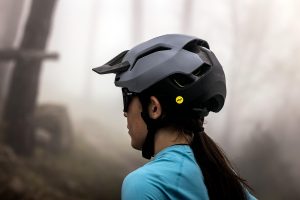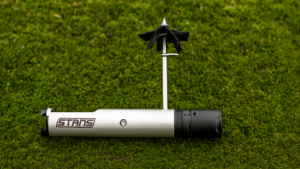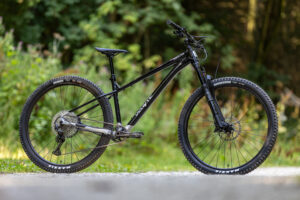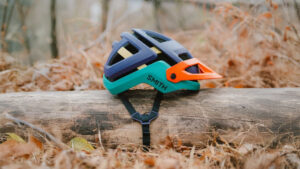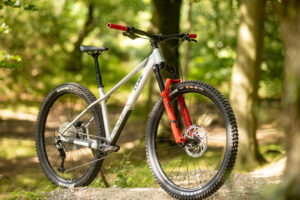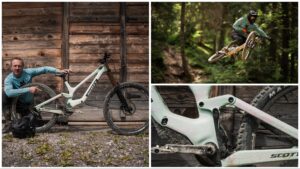Canyon's Strive:ON is a fast, playful e-bike, whether you’re a pro racer or Strava warrior.
The Canyon Strive:ON CFR is a big-hit e-bike with the precision of a scalpel
For a brand so focused on racing (and so proficient at building one of the best e-bikes on the market in the shape of the Spectral:ON), it was only a matter of time before Canyon designed a competition enduro e-bike. What’s more of a surprise is how accomplished the new Strive:ON is without a number zip-tied to the bars.

Having won the 2023 E-EDR Championship, the Strive:ON is also our e-enduro test winner!
Need to know
- Race-ready enduro e-bike with 170mm front/160mm rear travel
- Bosch motor with 85Nm and 600W peak power – top model gets the lighter Race motor with 2m overrun feature
- Either 625Wh or 750Wh battery enclosed by carbon chassis – choose your battery to suit the race
- Four frame sizes, all with a mixed wheel set-up
- Three models with prices starting from £5,699
What are the ingredients needed to make one of the best e-bikes for enduro racing? A Bosch motor for that fast, predictable response and powerful overrun to slingshot you out of tight corners and drive you through technical chess moves on timed power stages. An accessible battery compartment for those mandatory power pack changes. A tight, manoeuvrable, compliant chassis that carries speed and conserves energy with the suspension kinematics tuned to provide ample grip rather than ultimate progression when landing big drops and moto jumps.

The Canyon Strive:ON CFR is good value and joy to ride.
Race proven design
If those are the pieces of the puzzle, then the finished jigsaw might well end up looking like the new Canyon Strive:ON – a purpose-built race bike that has just been ridden to the 2023 E-EDR series win piloted by downhill legend Fabien Barel.
But Canyon is not the only brand gunning for glory with a dedicated e-enduro bike; Orbea has the equally fresh and similarly successful Wild M-Team. Both are closely matched in terms of travel and geometry, both pack Bosch’s Performance CX motor, and both have a World Series title under their belts. So we brought both of these winning rigs together to find out which one performs better when you’re not chasing stage victories.
- Read our full review of the Orbea Wild M-Team
- Read our comparison review between the Canyon Strive:ON CFR and the Orbea Wild M-Team

Angled skid plate helps the Strive:ON to slide forward if it hits a rock shelf.
Frame and geometry
The Strive:ON layout has more in common with Canyon’s Spectral:ON than the unassisted Strive enduro race bike. The shock runs inline with the seatstays, anchored to the down tube at the forward eyelet, rather than sitting parallel to the seat tube as it does on the analogue Strive. But with far less room to work with between the top of the motor and the underside of the top tube, Canyon couldn’t have replicated the layout of the unassisted version if it had wanted to. Also missing from the e-bike is the Shapeshifter travel and geo switch with its on-the-fly adjustment. For the simple reason that pedal efficiency isn’t as important when you have 600W and 85Nm of torque on tap from the Bosch motor. Leaving it off has saved weight and reduced complexity, while also freeing up space inside the front triangle for a water bottle.

Bosch Performance CX motor provides snappy acceleration and predictable overrun.
The Strive’s adjustable sizing – where drop-in head tube inserts let you tune the reach – also gets left on the shelf. Instead the Strive:ON gets four sizes, where the reach mirrors the shortest settings on the analogue bike. That’s not to say it’s cramped; quite the opposite in fact. With 450mm reach on the small, 475mm on the medium, 500mm on the large and 525mm on the XL, it’s generous enough that we could ride a size smaller than the equivalent Orbea Wild, and benefit from extra standover clearance as a result.

Canyon Strive:ON Vs Orbea Wild geometry chart – both measured in our workshop
The Strive:ON gets the same travel as the Orbea, with 170mm up front and 160mm at the rear. The head angles are almost identical (63.0º vs 63.1º), the chainstays are 5mm shorter on the Canyon, and the BB is 3mm lower. Although there’s only 2mm in the reach between the large Orbea and the medium Strive:ON, the Canyon has a 10mm shorter head tube and 15mm shorter seat tube. Which leaves the only other significant geometry difference being the effective seat tube angle, which is around 2º steeper on the Strive:ON than the Wild. Canyon advertises 160mm travel for the Strive:ON, but just like the Wild, we measured the actual travel 2mm shy of that claim. Certainly nothing to make a fuss about.
As a no-nonsense race machine, all three Strive:ON models use the same high-end CFR carbon frame that weighs a claimed 3.26kg in size medium (500g more than the Orbea). This is made up from stronger fibres that allow fewer layers to be used, reducing weight in the process.

Remove the chunky skid plate with a single bolt and you can access the battery compartment.
The bulkier Bosch Performance CX housing prevents Canyon from clocking the motor as radically as it does with the Shimano unit on the shorter travel Spectral:ON. But even so, the engineers have managed to house the battery entirely within the down tube, where it sits snugly against the base of the motor. The continuous down tube profile retains optimum structural integrity, which keeps the weight down, and the position of the battery is kept low for a desirable centre of gravity and weight balance. Yet remove the reinforced skid plate and you can extract the battery and slot in a freshy without moving the motor. Although, you have to be careful when installing the battery, as getting it to line up with the electrical connection near the head tube is definitely fiddly. The Canyon also cut out on numerous occasions when descending. Which proved to be an issue with the battery moving very slightly and losing connection in the down tube. Bosch has a new latch that claims to fix the problem, and we’ve got one to try out.

The Strive:ON with its pants down reveals the Bosch PowerTube battery. Use the strap to release the cam, and the battery slides right out.
Canyon gives you the option to choose between the 750Wh Bosch unit for maximum range, or the 625Wh option and custom plastic spacer to save 700g for ultimate agility. Canyon’s in-house mounts also save a worthwhile 300g over the standard-fit Bosch parts. The larger battery costs an additional £200, and you can select it at the checkout.
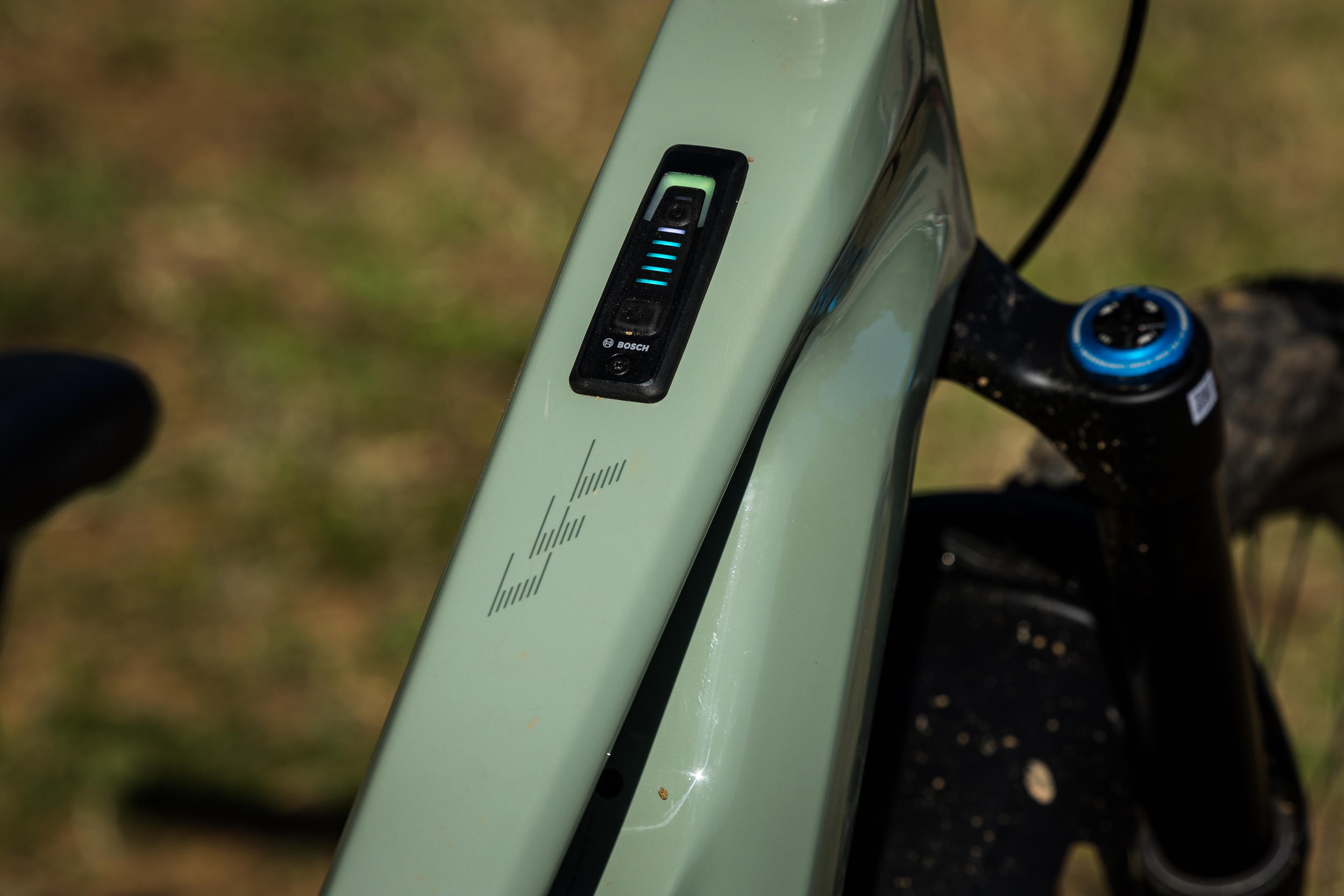
Bosch’s Top Tube Controller gives mode info (the top LED) and battery status (the five lower LEDs). Each LED can display at least two colours, which indicates the battery remaining in 10% increments.
A couple of other smart details found on the Canyon that not many other brands get right is a speed magnet mounted to the valve stem – this gets picked up by the sensor in the back of the motor and eliminates the need for wiring along the chainstay. And the Strive:ON comes standard with Bosch’s top tube Controller and wireless Mini Remote. It’s clean and simple, but by connecting to the Bosch Flow app you can still customise settings and dig into performance metrics.

Float X2 shock can take extra spacers if you want a more progressive suspension response.
Suspension
While the top of the range Fabien Barel race replica comes adorned with RockShox suspension, this CFR model is all bright-eyed and bushy-tailed with a 170mm-travel Fox 38 Performance Elite Grip2 fork paired with a Fox X2 Performance shock. That gets you four-way adjustable damping up front and two-way adjustment at the rear with the addition of an easily reachable climb switch.
While the Strive:ON has more progression than the Orbea, it is really eager to plunge towards the sag point. We ended up at 210psi to give us 17mm of shock sag, which equates to 27% of total travel. Run it any softer and we found that our dynamic sag was more like 40-50%.
There are no spacers in the Float X2 shock, so it’s relatively easy to add end stroke progression with volume spacers. In fact that’s exactly what we did, fitting a single 0.125 spacer to increase the bottom out resistance. Like the Orbea Wild, we also ran 91psi in the fork.

The rubber charging port flap feels flimsy and can pop out of its mount easily.
Components
Canyon has turned to Shimano for the drivetrain and brakes on the CFR model. Which gets you an XT mech, SLX 10-51t cassette and Deore chain. There’s a XT shifter that lets you change more than one gear at a time, despite this being frowned upon when it comes to prolonging the life of your drivetrain.
The only third party brand involved in the drivetrain is E*Thirteen, which provides the E-Spec Plus crank, and Canyon itself, responsible for the neat upper chain guide.

Fox 38 Float Performance Elite forks offer all the performance of the Factory model while reducing cost.
Four-piston Shimano XT brakes are matched with big rotors – 220mm front and 203mm rear – to provide ample stopping power, and they remained perfectly consistent throughout the test.
DT Swiss wheels are a popular choice as original equipment on e-bikes, and the HX1700s on the Strive:ON went about their business with little fuss or fanfare during the test. They are shod with a Maxxis Assegai up front and a Minion DHR II out back. Canyon has gone for a mix of slightly lighter casing/firmer compounds than we’d choose for full-on enduro tracks. So while we didn’t suffer any punctures during the test, we have a feeling most riders will want to upgrade to a softer compound Maxx Grip rear tyre, and maybe a tougher casing up front, for rowdy, alpine trails.
Canyon turns to its own G5 components for the bars, stem, grips and dropper post. While the grips offer very little in the way of cushioning, the dropper post is a clever design that allows you to customise the amount of drop by unthreading the collar and rotating the insert.

Canyon’s Strive:ON is a high-flying enduro rig.
Performance
At the weigh in, our medium Canyon Strive:ON came in at 23.6kg. That’s without pedals and with the smaller 625Wh battery installed. Opt for the bigger capacity battery and throw on some heavier-duty tyres and you’ll be looking at around 24.5kg. Which is still a little less than average for a long-travel e-bike, even if it’s not quite as light as the equivalent Orbea Wild.

Ground clearance can be an issue on the Strive:ON owing to the longer cranks, lower dynamic ride height, and advanced position of the down tube.
Climbing
The Strive:ON’s steep 78.8º effective seat angle keeps your hips centred over the bottom bracket, helping with the subtle weight shifts needed to maintain traction and resist wheel lift when the trail rears up. As such it makes mincemeat of steep technical climbs, where the sensitive, controllable response of the Bosch Performance CX motor just adds to the Strive:ON’s potency.
You have to be a little more careful of rear wheel placement with the mullet set-up when navigating crux moves, as the smaller diameter carves a tighter radius. Also, the low dynamic bottom bracket height does induce more than its fair share of pedal strikes. In this regard, we think Canyon would have been wise to go for shorter 160mm cranks, and extract a smidge more clearance.
We also found that, while the Strive:On tracked smaller bumps well, which optimised traction, there was less mid-stroke support as our weight tipped back. Reducing the sag really helped in this regard, but if you don’t want to run the rear suspension firmer, the climb switch on the Fox Float X shock is within easy reach.

Although super agile, the Strive:ON boasts ample composure.
Descending
If you’re worried this race bike is too focused to be fun, then don’t be. It’s a fantastically rewarding bike to ride, with loads of straight-line stability from the low centre of gravity and slack head angle, paired with an impressive willingness to change direction and laser-focussed accuracy when hunting for lines. Thanks to its low standover, mullet rear wheel and well-balanced chainstay length, we always felt at one with the Strive:ON.
Agility comes by the bucket load, and compared to the Orbea (loaded up with the same 750Wh battery, on the same tracks, on the same day) it was stark just how much less effort it took to hustle the Strive:ON through a sequence of corners.

Punta Ala (home of the very first EWS race back in 2013) provided an excellent testing ground for the Strive:ON.
Part of the reason for this sense of space and freedom to move around is down to the generous sizing; we could ride a medium Strive:ON compared to a large Wild. So while the two bikes share very similar dimensions, the Canyon gives you a 10mm lower front and 15mm more seat clearance, which seems like acres in the real world. While the Orbea feels like you’re standing tall, blasting through the desert on a Dakar bike, the Canyon lets you hunker down like a Moto GP racer. Equally, that 27.5in rear wheel on the Canyon gives you loads more butt clearance on drops and steep roll-ins. Which is not to be sniffed at if you’re of average height or less.

The Canyon Strive:ON CFR can change direction in the blink of an eye.
If you like to pop little manuals and slap the bike into turns, you’ll love the Strive:ON. It dances down feature-laden trails, allowing you to let your expressionism run riot. And never do you feel overwhelmed by the amount of travel on offer.
Verdict
Canyon’s Strive:ON is one of those bikes we just jumped on and immediately felt at home. It’s like a favourite pair of slippers, if those slippers were also designed to run 100m in less than 10 seconds. It handles almost telepathically, responding to thoughts seemingly before they manifest into muscle contractions. And Canyon’s sizing just adds to the bike’s mobility, effectively squeezing a larger frame size into a more compact space, so you have more range of motion when the trail starts to buck and warp in ungodly directions. The price is half what you’d pay from most mainstream brands, yet you get all the important bits like a Bosch motor, big removable battery, carbon frame, and multi-adjustable Fox suspension. All that box-ticking is impressive, but perhaps the Strive:ON’s best trait is that it manages to be both ludicrously capable and brilliantly rewarding. Win on Sunday, shred on Monday. With the Strive:ON you no longer have to choose between the two.








